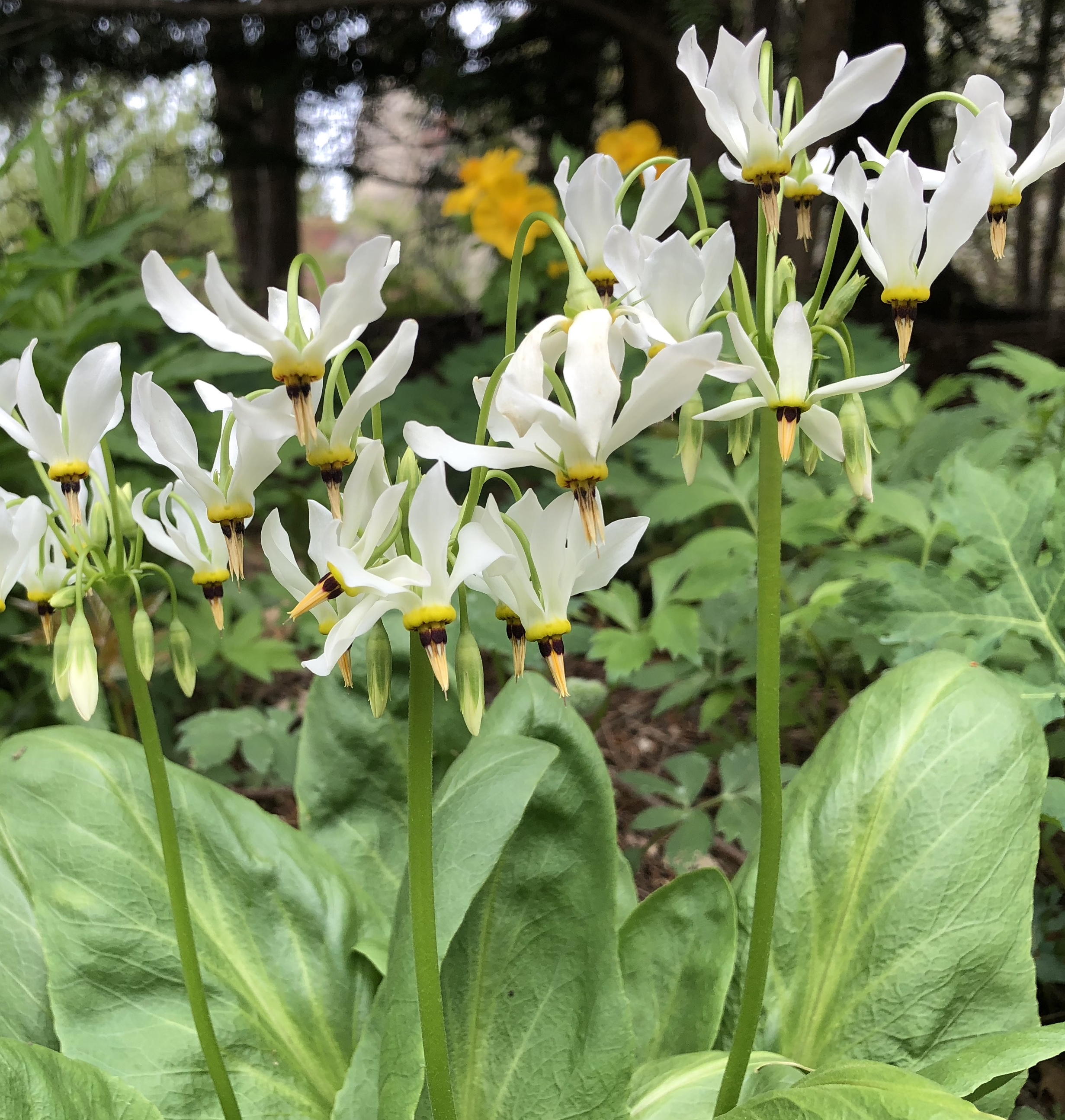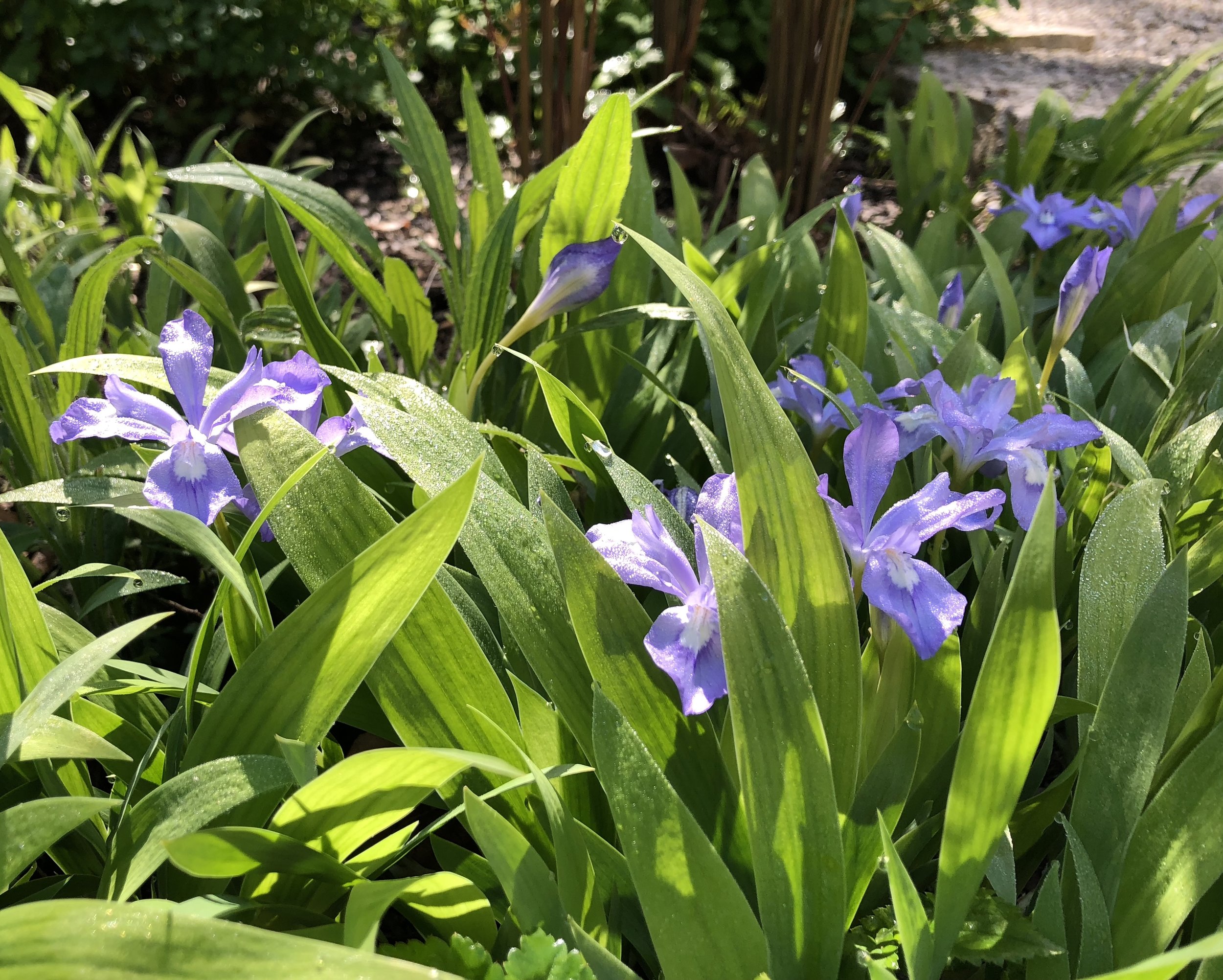THE GROSSE POINT LIGHTHOUSE WILDFLOWER TRAIL GARDEN
{Planted 1937}
The Grosse Pointe Lighthouse stands on a projection of land which was given its name by the 17th century French fur traders, when Pottawattomi roamed the area. In 1673, Marquette and Joliet canoed past the point with their voyagers on their way east following their exploration of the Mississippi. Marquette may well have camped here when he returned in December of the following year. The first white man to settle in Evanston was on these grounds in 1826.
As shipping increased on Lake Michigan, there were several wrecks on the treacherous offshore shoals, prodding the United States government to build the lighthouse. It was completed in 1873, along with an accompanying duplex for its keepers, who kept the oil lamp lighted day and night. The light is automatic now and the double house is co-occupied by the Superintendent of the Lighthouse Park District, which maintains the park, and by the Nature Center run by the Evanston Environmental Association.
In 1937, the park board gave permission for the planting of a wildflower trail to the Garden Club of Evanston. They in turn hired the well-known landscape architect, Jens Jensen, to draw the plans. Native herbs, which had been used for medicinal purposes by the Indians were preserved. Existing trees included black oaks, honey locusts, basswood, sugar and silver maples, black cherries, and American elms. Mr. Jensen's plan added pin oaks, cut-leaf maples, weeping birches, wild crabapples and cherries, as well as witch hazel bushes.
The first planting included eight varieties of violets native to Evanston, a fern collection, and hundreds of wild plants, many of them from places about to be destroyed by highway or residential development and from the gardens of generous club members. Plantings were designed to give the appearance of a natural woodland, except that each species was grouped in a mass to make a better show with the taller plants placed to the outside of the borders and the shorter plants toward the path. A fountain was installed west of the picnic shelter at the south side. Later, a garden seat was added.
Dr. Margery Carlson, the first female Professor of Botany at Northwestern University and honorary garden club member and now retired, brought her energy and know-how to the chairmanship of the Nature Trail in 1960. At that time, much restoration work needed to be done. New plants were purchased. Dr. Carlson, a lifelong teacher, made the garden a learning experience for all its caretakers. Under her direction, committee members became knowledgeable about the quirks of Jack-in-the-pulpit, Solomon's seal, and Bishop's cap. When Dr. Carlson stepped down from her chairmanship in 1979, Mrs. Charles Bronson, a committee member, stepped into her gardening shoes. Under her able direction, the work and beauty continued.
In the ensuing years and to this day, the Garden Club of Evanston members have worked diligently to maintain the Wildflower Trail Garden. The garden celebrated its 80th birthday in 2017.
FLOWERS & ferns GROWING AT THE GROSSE POINTE lIGHTHOUSE WILDFOWER TRAIL GARDEN
Bellwort - Uvularia grandiflora
Bishop's Cap - Mitella diphylla
Black snakeroot - Cimicifuga racemosa
Bloodroot - Sanguinaria candensis
Blue lobelia - Lobelia siphilitica
Blue cohosh- Caulophyllum thalictroides
Buttercup- Ranunculus spetentroinalis
Canada violet - Viola canadensis
Carrion flower - Smilax herbacea
Celandine poppy - stylophorum diphyllum
Cow parsnip - Heracleum lanatum
Crested iris -Iris cristata
Dogtooth violet, white Erythronium americanum
Dogtooth violet, yellow - Erythronium cucullaria
Early meadow rue - Thalictrum dioicum
False bug bane - Trautvetteria caroline
False rue anenome - Isopyrum biternatum
Hepatica - Hepatica americana
Jack-in-the-pulpit - Arisaema triphyllum
Joe Pye weed - Eupatorium maculatum
May-Apple - Podophyllum peltatum
Rue anenome - Anemonella thalictroides
Shoy lady-slipper - Cypripedium reginae
Smooth yellow violet - Viola pennsylvanica
Solomon's seal false - Smilacina racemosa
Solomon's seal, true - Polygonatum biflorum
Spring beauty - Claytonia virginica
Sweet-cicely - Osmorhiza longistylis
Toothwort - Dentaria laciniata
Trillium, dwarf white - Trillum nivale
Trillium, great - Trillium grandiflorum
Trillium, recurved - Trillium recurvatum
Twin leaf - Jeffersonia diphylla
Virginia blue bells - Mertensia virginica
Waterleaf-Hydrophyllum virginianum
White baneberry - Actea pachypoda
White snakeroot - Eupatorium rugosum
Wild geranium - Geranium maculatum
Wild ginger - Asarum canadense
Wild ginger - European Asarum virginicum
ferns
Bladder fern - Cystopteeris bulbifera
Christmas fern - Polystichum acrostichoides
Everygreen wood fern - Dryoteris marginalis
Fragile fern - Cystopteria fragilis
Interrupted fern - Osumnda Claytoniania
Lady fern - Athyrium Felix-fernia
Maidenhari fern - Matteuccia Struthioteris
Royal fern - Osmuda regalis
Sensitive fern - Onoclea sensibilis
The Garden Club of Evanston has completed the designation of the Wildflower Garden as a Certified Wildlife Habitat with The National Wildlife Federation, through its Garden for Wildlife program. (Every Certified Wildlife Habitat (1) provides four basic elements all living creatures (such as birds, butterflies and bees) require: food, water, cover and places to raise young, and (2) is maintained in a sustainable way that incorporates native plants, conserves water and reduces or eliminates the use of pesticides









